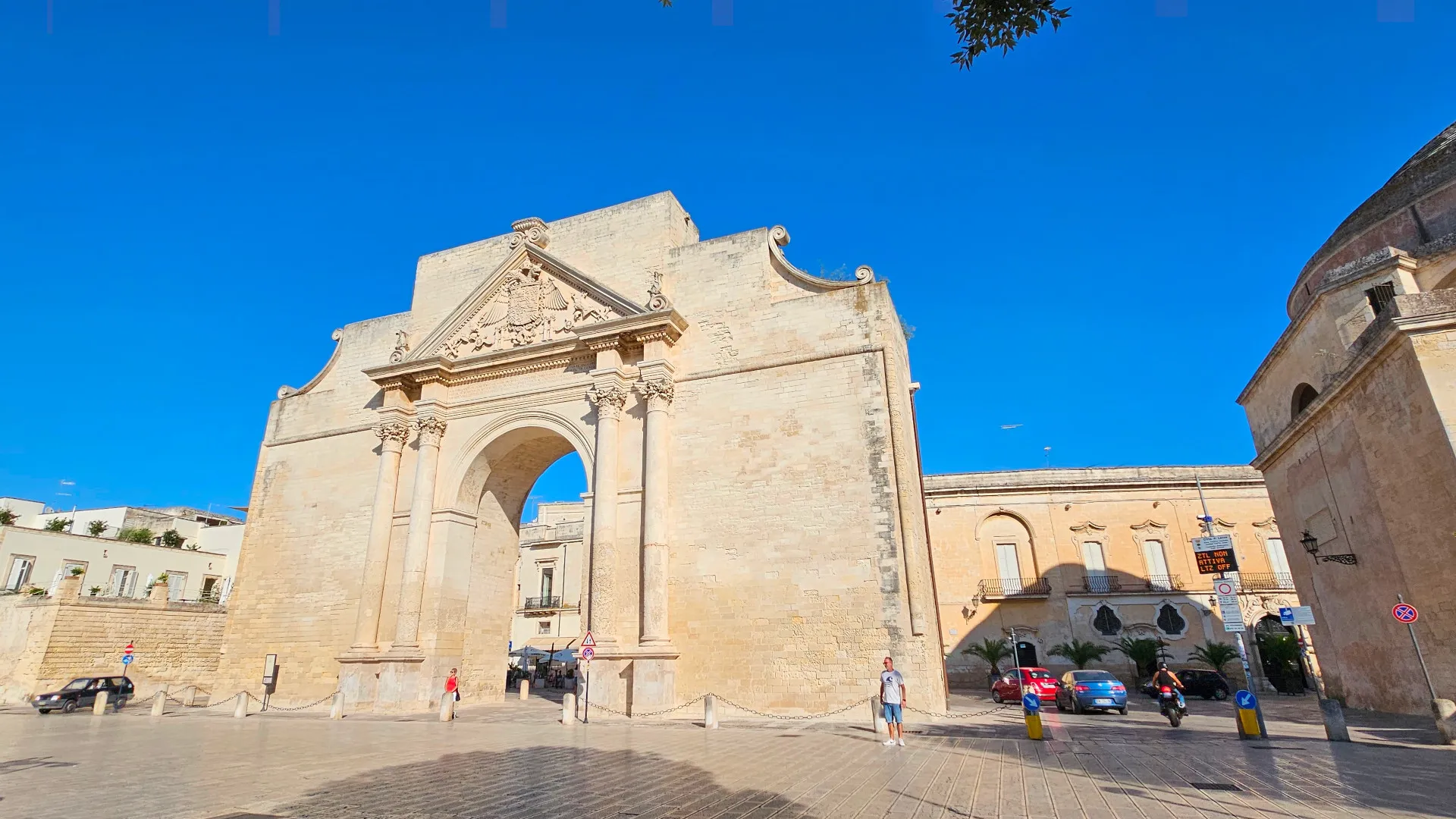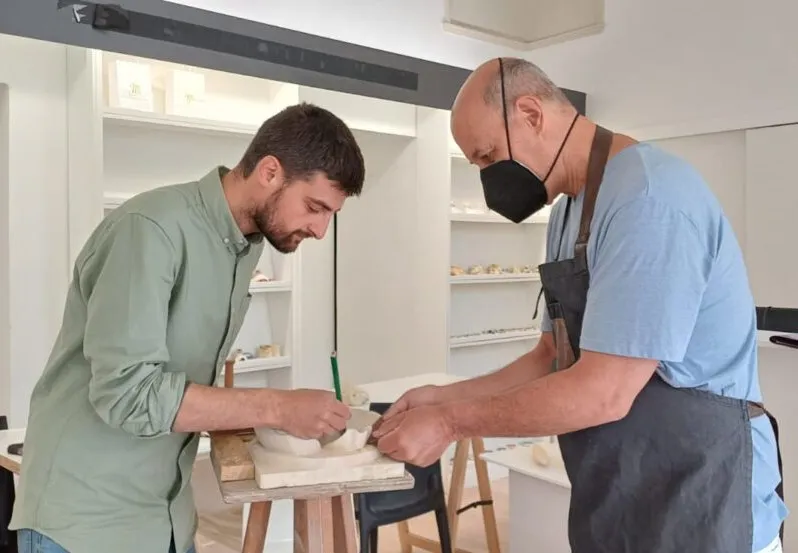Cathedral of Otranto and Aragonese Castle
Updated at: 20-09-2024
How this content can help you:
- You will discover the history and architecture of the Otranto Cathedral.
- You will learn about the unique medieval floor mosaic in Europe.
- You will learn about the history of the Otranto martyrs in the Martyrs' Chapel.
- You will receive practical information for visiting the cathedral.
- You will explore the Aragonese Castle and its historical significance.
- You will discover how to visit the castle, including opening hours and fees.
- You will visit the underground areas and exhibitions hosted in the castle.
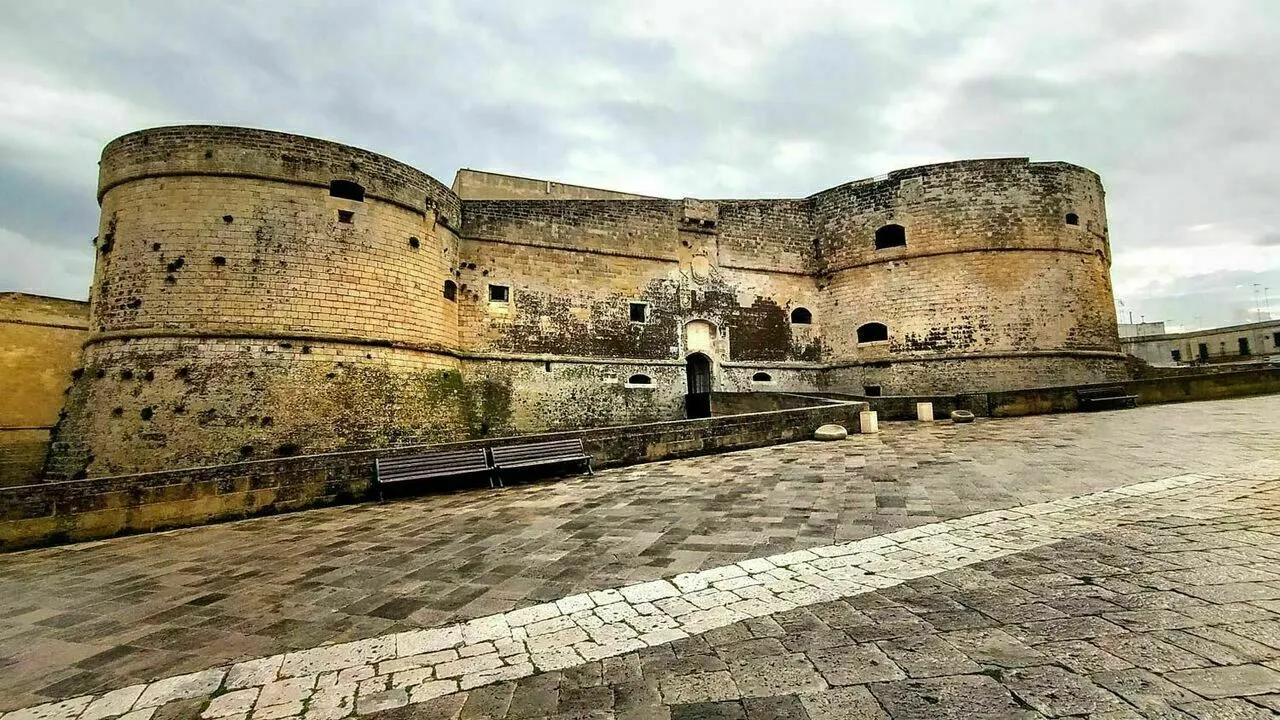
Otranto, with its rich historical and cultural heritage, is home to two of the most fascinating monuments in Salento: the Cathedral of Santa Maria Annunziata and the Aragonese Castle.
These two sites offer a deep immersion into the history, art, and faith of the region. Below, we present a detailed guide to explore these architectural treasures.
Otranto Cathedral
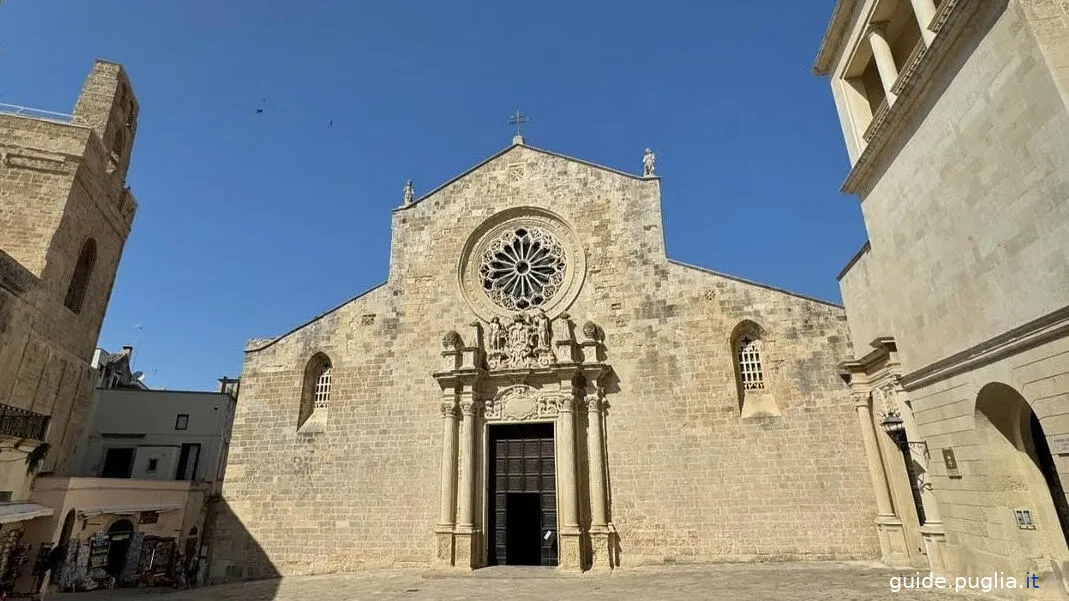
Otranto Cathedral, Officially known as the Cathedral of Santa Maria Annunziata, is one of the most captivating architectural gems of Puglia.
Situated in the heart of Otranto's historic center, this cathedral is a historic monument that narrates centuries of history, art, and faith.
Can You Visit Otranto Cathedral?
Certainly, it is possible to visit the Cathedral of Otranto. Generally, entrance is free, making this experience accessible to everyone. However, there may be exceptions for special events or access to specific areas like the crypt.
Opening Hours and Access:
The cathedral is generally open to the public every day, with hours that can vary depending on the season. During the summer months, the opening hours tend to be extended to accommodate the tourist flow.
Guided Tours:
For those who wish to delve deeper into the history and artistic details of the cathedral, guided tours are available.
These tours offer a more detailed analysis of the artworks, architecture, and history of the cathedral, including the stories of the martyrs of Otranto and the famous floor mosaic. Tours can be booked in advance and are available in various languages.
Useful Tips:
- Dress Code: As it is a place of worship, it is important to dress appropriately. It is recommended to wear clothing that covers shoulders and knees.
- Photography: Taking photographs inside the cathedral is allowed, but it is advisable to do so without disturbing other visitors and ongoing religious ceremonies.
- Respect for Worshippers: During the visit, remember to maintain respectful behavior, especially if religious services are taking place.
Architecture and History
The cathedral, consecrated in 1088, is a fascinating example of Romanesque architecture with Byzantine and Baroque influences. Its façade, simple yet imposing, is enriched by a beautiful 15th-century Gothic-Arabic rose window, which was further decorated in Baroque style in 1674.
The bell tower, built in the 12th century, adds another element of interest to the architectural complex.
Interiors
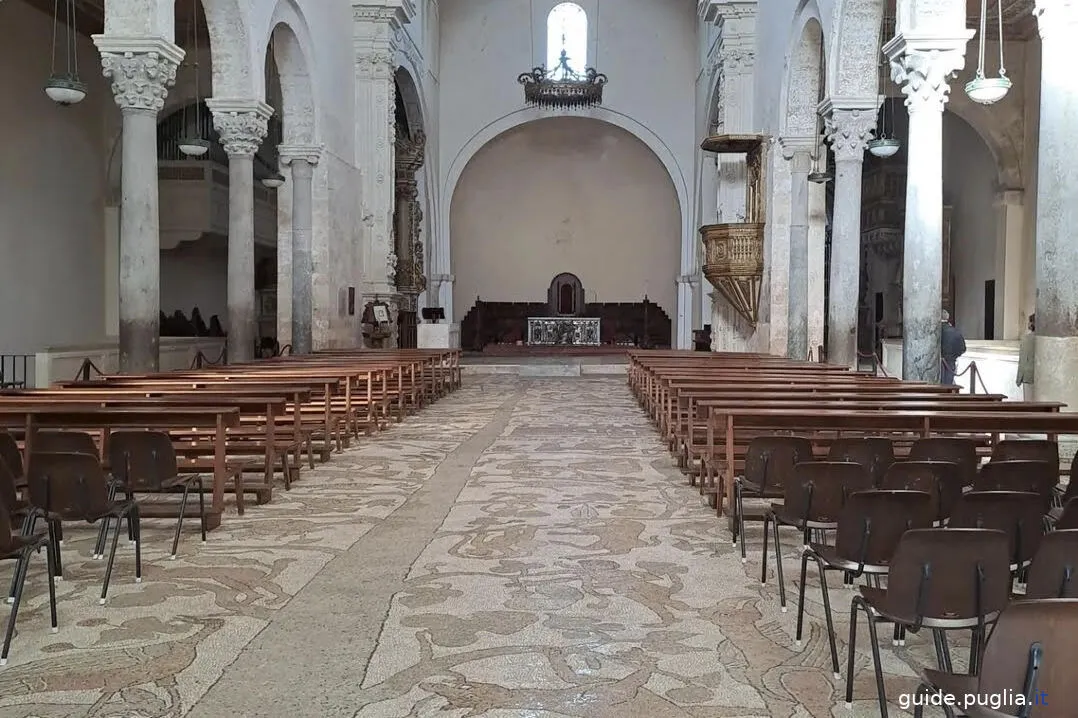
The central nave and the two side aisles are separated by granite columns with capitals of different styles, creating a majestic and solemn atmosphere.
Particular attention should be paid to the golden wooden ceiling in Moorish style and the precious high altar with the 18th-century silver antependium.
The Floor Mosaic
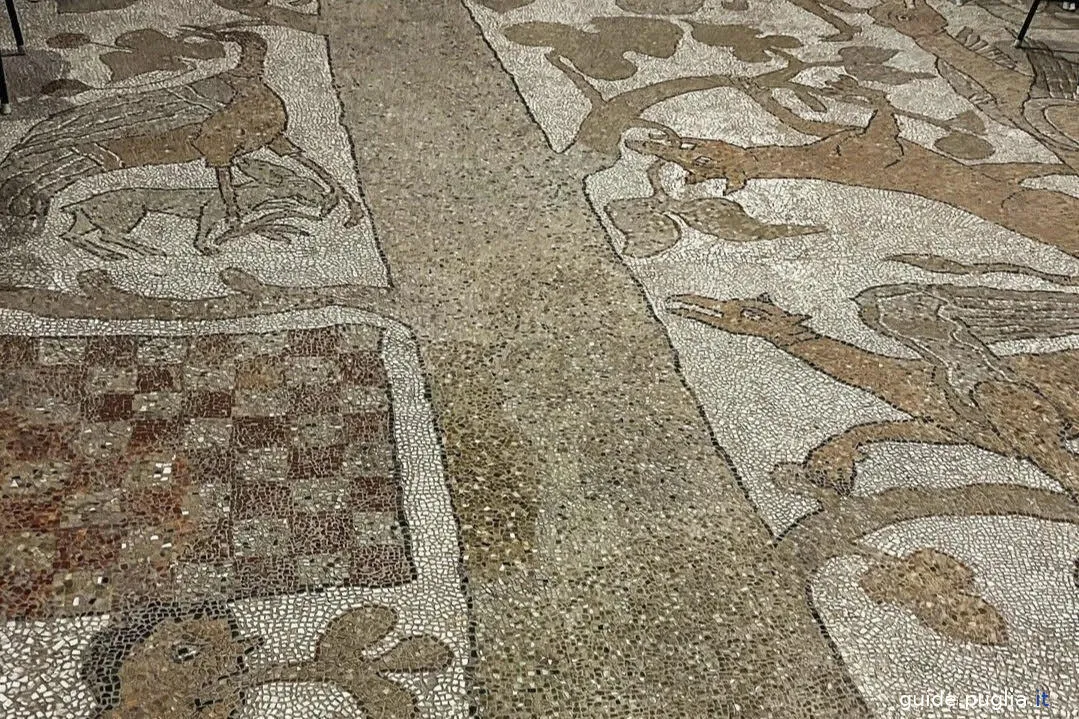
One of the most extraordinary elements of the cathedral is the floor mosaic, created by the monk Pantaleone between 1163 and 1165. This mosaic, which extends throughout the central nave, the transept, and the apse, depicts biblical and medieval scenes, including the famous "Tree of Life".
It is one of the largest and best-preserved medieval mosaics in Europe.
The Chapel of the Martyrs
Another point of interest is the Chapel of the Martyrs, which houses the bones of the citizens of Otranto who were killed by the Ottomans in 1480 for refusing to renounce their faith. This chapel, located at the end of the right aisle, is a place of intense spirituality and reflection.
Conclusion
Visiting the Cathedral of Otranto means taking a journey through history and art, immersing oneself in a place that has preserved its beauty and charm over the centuries. It is a must-see for anyone wishing to explore the wonders of Puglia.
€ 115
€ 35
€ 500
Aragonese Castle of Otranto

The Aragonese Castle of Otranto is one of the most fascinating and historically rich attractions in Salento.
Located in the heart of the city, this medieval fortress not only dominates the landscape but also tells centuries of strategic defense and cultural history.
Can you visit the Aragonese Castle of Otranto?
Yes, it is possible to visit the Aragonese Castle of Otranto. The castle is open to the public and offers a fascinating experience for anyone interested in the history and culture of Salento.
Opening Hours
The castle is open daily from 10:00 AM to midnight, offering plenty of opportunities to plan your visit, even in the evening hours.
For a more in-depth visit, guided tours are available, particularly recommended for exploring the castle's underground sections. These tours require a reservation.
Guided Tours
Guided tours of the Aragonese Castle of Otranto are particularly recommended for those who desire a more detailed and informative experience.
During the visit, expert guides will illustrate the history of the castle, its architecture, and the historical events that have marked this place.
Highlights of the Guided Tours:
- Exploring the Underground: One of the main attractions of the guided tours is access to the castle's underground areas, which are normally not accessible with a standard ticket. Here you can see the defensive structures up close and learn how they were used to protect the city from invaders.
- Exhibitions and Displays: The castle hosts various permanent and temporary exhibitions. These include an exhibition dedicated to the history of Otranto and the castle, and a photographic exhibition on Frida Kahlo. Inside the castle's towers, there is also a museum displaying Roman artifacts and other archaeological finds.
- Architecture and History: The guide will take you through the different sections of the castle, explaining the architectural features and the modifications made over the centuries, from the Normans to the Aragons, up to the Spanish fortifications of the 16th century.
Ticket Prices
- Full ticket: €12.00
- Reduced ticket: €9.00 (for groups of 12 people, concessions, holders of the Otranto Card)
- Reduced ticket for minors under 18 and residents: €7.00
- Underground access: €4.00
- School groups: €3.00
- Free: for minors under 18 visiting with parents, children under 6, disabled visitors with a companion, and licensed tour guides.
History of the Castle
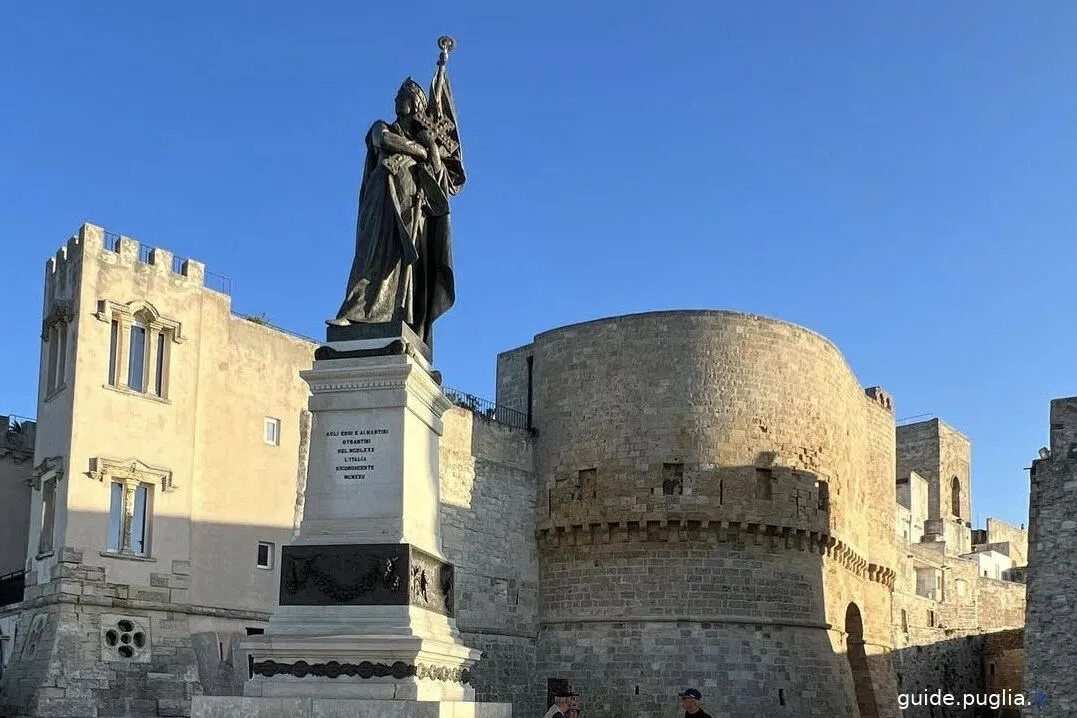
Construction and Origins
The castle was built between 1485 and 1498 by order of Ferdinand I of Aragon, with the aim of defending the city from Ottoman attacks, such as the devastating one in 1480. This attack marked a painful chapter in Otranto's history, with the city occupied by the Turks for over a year.
The castle's design was realized by renowned architects like Ciro Ciri and Francesco di Giorgio Martini, who integrated the existing Swabian fortifications and improvements introduced by the Turks. The castle was further reinforced in 1578 with the addition of external bastions and a lance-shaped bastion on the seaward side.
Over the centuries, the castle has undergone various restoration and modification works, but it has retained its imposing structure. Today, the castle is an important tourist and cultural site, hosting temporary and permanent exhibitions that tell the history of the region and the castle itself.
Structure and Fortifications
The Aragonese Castle of Otranto has an irregular pentagonal layout with three cylindrical towers at the corners, a characteristic lance-shaped bastion on the seaward side, and a wide moat surrounding it.
The bastion is decorated with the coats of arms of Antonio De Mendoza and Don Pedro da Toledo, while the entrance portal features the coat of arms of Charles V.
The Castle's Underground
- Defensive Structures: The underground houses a series of defensive structures crucial for the protection of the castle and the city of Otranto. These include secret passages, tunnels, and underground chambers used for military and strategic purposes. These spaces offer a fascinating glimpse into how the fortress was defended during sieges.
- Prison Cells: In some sections of the castle's underground, you can find the ancient prison cells. These spaces were used to detain prisoners during periods of conflict. Guided tours often include stories and anecdotes about how prisoners were treated and the living conditions within these cells.
- Storage and Warehouses: The castle's underground also served as storage and warehouses for provisions and weapons. Here, essential resources for surviving long sieges were stored. During the visit, you can see the areas where food supplies, ammunition, and other provisions were kept.
- Traces of Ancient Fortifications: Exploring the underground, visitors can observe traces of the ancient Swabian fortifications and subsequent Aragonese and Spanish modifications. These architectural elements show how the castle was adapted and improved over the centuries to respond to various threats.
- Archaeological Finds: During the visits, it is also possible to see various archaeological finds discovered in the underground areas. These artifacts offer further insights into daily life and military practices within the castle. Some of these objects are displayed in permanent exhibitions inside the fortress.
Conclusion
The Aragonese Castle of Otranto is an imposing military structure and a rich treasure trove of history and culture.
Every corner of the castle tells a part of the region's troubled history, from Ottoman invasions to Spanish influences, offering visitors a rich experience of discoveries and historical charm.
